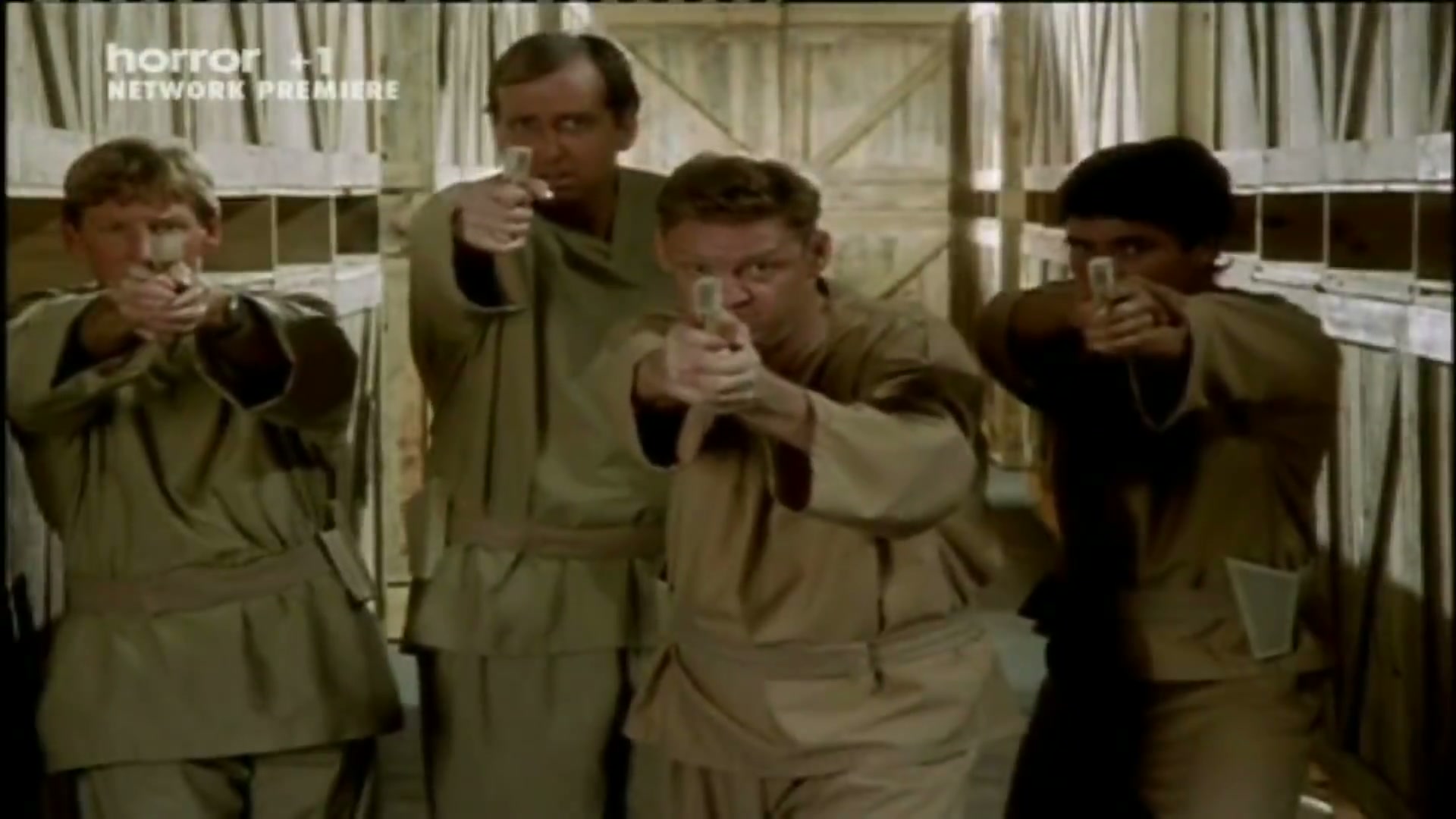Virtual Nightmare is the anti-Matrix movie you've never seen
Virtual Nightmare may not be as pretty as The Matrix but it’s just as smart.

The following article contains spoilers for the 2000 TV movie Virtual Nightmare.
Virtual Nightmare, released a year after The Wachowskis unleashed The Matrix on the world, has all but disappeared into obscurity. But this made-for-TV movie is every bit as smart, maybe more so, than Warner’s 1999 smash.
If you were just channel hopping, it would be easy to mistake Virtual Nightmare for a straight up Matrix rip-off, the kind that, if they’d been making mockbusters in 2000, The Asylum might have churned out. Directed by Michael Patterson and written by Dan Mazur and David Tausik, it follows the story of Dale Hunter, a junior advertising executive who starts to suspect the world isn’t as it seems.
Related: Best sci-fi movies of all time
He catches the world glitching, with, amongst other oddities, descriptions like “leather briefcase” appearing on objects. He’s further awakened to his world’s unreality by Wendy, a librarian who already feels disconnected from society. And so, down the rabbit hole Virtual Nightmare goes.
But that’s where the movie parts company with The Matrix. It’s ostensibly based on a story by Frederik Pohl, The Tunnel Under the World, though the similarities are cursory at best. It seems more likely the producers just wanted to use Virtual Nightmare, that tale’s alternate title.
There are a couple of aspects in particular that make Virtual Nightmare stand out. Firstly, it keeps you off balance. It never goes full Eraserhead but you end up sharing Dale’s unease. The movie does throw in the odd Agent analog but there are no sinister forces nipping at his and Wendy’s heels.
Breaking space news, the latest updates on rocket launches, skywatching events and more!
Instead, it’s the little things that prove so unsettling. When he asks what Arora, the product he’s supposed to be advertising is, he receives answers like, “This is a marketing division, not a philosophy department.” And why does the prospect of promotion seem like such a threat?

When Dale starts seeing a horrifying, post-apocalyptic landscape, you think you’ve got it all figured out. The world is a smoking ruin and everything is fake, an illusion projected by a massive Virtual Reality system.
He joins up with a group of rebels and heads to the city, ready to infiltrate the ruling elite and shut the machine off. Except then, it’s revealed that the rulers are no more in control of the system than anyone else Dale’s met.
The Matrix had a definite them and us – the Agents were the bad guys and Neo and company were liberators, even if their efforts resulted in the deaths of those who were still part of the system. Virtual Nightmare removes the bad guys from the equation, and it absolutely works.
What doesn’t always work is the show’s limited budget. There’s a dream sequence that’s meant to be disturbing, with Dale’s father morphing into a skeleton as his son comes down a slide towards him. Unfortunately, the skeleton in question looks like it’s stepped off an old graphics card box. And, as you might guess, the impact is significantly lessened.
The post-apocalyptic world also looks a little cheap but it’s still a stark contrast to the “normal” world’s 1950s aesthetic. And it makes the movie’s ultimate reveal, its second standout feature, all the more powerful.
There are plenty of sci-fi movies where you’re left scratching your head but Virtual Nightmare’s writers recognize that, after being thrown so many curve balls, viewers would feel short-changed by an ambiguous ending. Virtual Nightmare doesn’t just deliver a satisfying ending, it bucks against multiple sci-fi tropes.
It’s revealed that there was no war, it all just came down to money. As Virtual Nightmare’s subterranean caretaker puts it, “Simple economics, son. Had to happen”. Instead, someone invented a Virtual Reality system (though Augmented Reality might be more accurate) that controls how people see the world.
"Soon everyone wants virtual houses, and not just houses. Soon it's cars, lawns, trees, plastic surgery, whatever,” the caretaker explains. The program, used to “enhance” everything from cookies through to cars, reads what people want and gives it to them.
So what about the rotting, post-apocalyptic world Dale saw, and the walled city, with the elite lording it over everyone? "Most folks like the suburban life, making money, keeping up with the Joneses,” the caretaker remarks. That’s what most people see.
But the rebels and the city elite require “special treatment”, so they each have their own projected reality, which Dale has been wandering in and out of. The city isn’t ruling over anyone, and the rebels aren’t fighting to smash the system.
Instead, it’s just a fantasy to keep them “happy”. You can just imagine The Matrix existing in its own little VR bubble while, a few miles away, everyone’s sipping tea and eating scones. In his head, Neo is soaring around the city but, to anyone who’s not part of that sphere he’s running around with his arm outstretched making noises with his mouth.

It’s a disarming revelation, both for the audience and for Dale himself. There’s no malevolent dictator to overthrow, no shaking his fist at the world’s war makers, no sinister agents enforcing order. Even the police, when Dale sees the world as it really is, have wooden guns. In fact, that’s the state of the world in general – no people in pods, no radioactive no man’s land, just a world draped in beige.
The movie does stumble a little towards the end, when it unveils Arora. It gives Dale a reason to take a spanner to the local VR broadcasting network, but it feels wholly tacked on. There’s also something uncomfortable about the lack of black characters. Maybe we blinked, or maybe it was just unfortunate casting. Or perhaps it was intentional and it’s the filmmakers’ comment about surburban America.
Does Virtual Nightmare have any real-world basis? It’s fractionally more plausible than The Matrix’s human batteries, we’ll give it that. What the movie calls VR is more like AR, augmented reality – images projected over the real world.
Pokémon Go is, perhaps the most famous use of AR, using your phone’s camera to superimpose Pokémon onto the landscape. However, there are also apps like IKEA Place which lets you test out furniture by “placing” a virtual model into an existing room. But that’s a long, long way from completely camouflaging reality and the idea of beaming it into people’s heads is pure science fiction.
Virtual Nightmare is floating around on YouTube, but it’s not available on any commercial streaming services. And as far as physical media goes, it never made it beyond VHS. But if you can get past its sub-Hollywood green screen, you’ll find a surprising, sharply-written sci-fi outing that deserves better than to be forgotten.

Chris is a freelance journalist who, aside from covering games and gaming-related tech, has a taste for horror, sci-fi and the post-apocalyptic. As well as Space.com, you can find his work at The Escapist, GameSpew (where he’s the morning news writer) and more. You can follow him on Twitter @MarmaladeBus.
